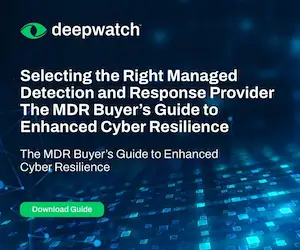
Threat intelligence integration is the systematic process of embedding external and internal threat intelligence (TI) sources directly into an organization’s security tools, workflows, and decision-making processes. The objective is to empower security operations centers (SOCs), detection engineering, and incident response teams with timely, contextual, and actionable threat insights that can be operationalized for prevention, detection, enrichment, and response. For large enterprises, true TI integration surpasses mere threat feed consumption—instead, it transforms TI into a dynamic, automated, and context-aware force multiplier across security architecture and operations.
- Threat Feed Aggregation and Normalization: Integration begins with collecting and normalizing threat intelligence feeds, covering indicators of compromise (IOCs), tactics, techniques, and procedures (TTPs), actor profiles, malware signatures, and vulnerability reports from commercial, open-source, industry, and ISAC sources. Normalization ensures all data is standardized for automated processing.
- Contextual Enrichment of Security Telemetry: Security devices (SIEM, EDR, XDR, NDR, SOAR, cloud platforms) enrich their logs and events in real-time with TI context—flagging known malicious IPs, file hashes, or behaviors detected in the environment. This feature enables analysts and automated systems to prioritize, correlate, and act on threats more effectively.
- Automated Detection, Prevention, and Response: TI integration powers automated rule generation, dynamic block lists, and orchestration workflows. For example, a newly discovered C2 domain can be immediately blocked enterprise-wide, or custom detection rules can be created in the SIEM or EDR based on actionable TI.
- Feedback and Closed-Loop Learning: Effective integration includes feedback mechanisms. Internal findings (e.g., confirmed incidents, false positives) are sent back to TI teams or providers, tuning the TI relevance and reducing future noise, while supporting more accurate customization.
- Cross-Functional Use and Decision Support: Threat intelligence integration enables not only automated control updates but also supports SOC, threat hunting, incident response, and vulnerability management with strategic context (e.g., threat actor priorities, sector-specific campaigns, and exposure mapping).
In summary, threat intelligence integration is critical for transforming raw threat data into operational advantage—enabling fast, accurate, and business-aligned action across the entire cybersecurity lifecycle of large organizations.
Importance of Threat Intelligence Integration for Enterprise Cybersecurity Professionals
For cybersecurity leaders, architects, and SOC managers in Fortune 1000 organizations, threat intelligence integration drives both tactical defense and strategic decision making. Its benefits extend well beyond simply aggregating feeds.
- Accelerated Threat Detection and Blocking: Integrated threat intelligence enables the immediate identification and automated blocking of known threats, reducing the time between external discovery and internal defense activation, which is crucial for time-sensitive threats such as ransomware or zero-day attacks.
- Enhanced Situational Awareness: SOC analysts benefit from enriched alerts and investigations, gaining real-time context about threat actor motives, campaign prevalence, and global threat trends relevant to the enterprise’s sector and technology footprint.
- Prioritization of Response and Remediation: By correlating TI with asset criticality and business process mapping, security teams can triage incidents and patching efforts based on real-world risk and current targeting patterns from active adversaries.
- Improved Threat Hunting and Investigation: Threat intelligence provides context, IOCs, and TTPs that shape and focus threat hunting and incident response workflows—enabling faster root cause analysis and more accurate lateral movement mapping.
- Regulatory and Business Alignment: Many regulatory frameworks and cyber insurance requirements now mandate threat intelligence usage and response capabilities. Integrated TI supports evidence of maturity, proactive defense, and regulatory compliance.
Threat intelligence integration creates a unified, intelligence-driven defense posture, enabling enterprise security teams to outpace adversaries, optimize resource utilization, and align defense with real-world threats.
A Detailed Technical Overview of How Threat Intelligence Integration Works
Successfully operationalizing threat intelligence integration in large organizations requires a robust technical architecture, well-designed workflows, and effective process governance.
- Feed Aggregation, Validation, and Scoring: Aggregators and TIPs (threat intelligence platforms) ingest feeds from diverse sources, deduplicate, validate, and score IOCs using confidence, relevance, and recency criteria. Technical teams ensure data is mapped to appropriate standards (e.g., STIX, TAXII).
- API-Driven Automation and SIEM/XDR Integration: SIEM, XDR, EDR, firewalls, secure gateways, and SOAR platforms connect via APIs to the TIP. They consume curated TI for real-time event enrichment, automated detection rules, and dynamic block/allow lists.
- Event Enrichment and Correlation: As telemetry flows into these tools, events are correlated with threat intelligence—adding context such as actor attribution, attack stage, and kill chain mapping. Analysts see enriched, prioritized alerts instead of raw event streams.
- Response Automation and Orchestration: Detection of TI-matched indicators can trigger SOAR workflows—quarantining endpoints, blocking domains, escalating tickets, or notifying business stakeholders. Playbooks leverage TI to inform incident categorization, containment, and post-incident analysis.
- Continuous Tuning and Feedback Loops: Incident outcomes and analyst feedback flow back to the TI platform, which dynamically adjusts scoring, filtering, and feed subscriptions to improve both the quality and relevance of future threat intelligence.
This architecture ensures that TI is actionable, context-rich, and seamlessly woven into every stage of security operations and strategic risk management.
Applications and Use Cases of Threat Intelligence Integration
Threat intelligence integration underpins a diverse range of high-impact enterprise use cases, strengthening detection, response, and risk prioritization.
- Automated Blocklisting: New malicious IPs, domains, and file hashes are disseminated directly to firewalls, web gateways, and endpoint controls, drastically reducing the window of exposure to known threats.
- Contextual Alert Triage: Security alerts in SIEM or XDR are automatically enriched with TI, giving SOC analysts immediate risk context, threat actor background, and guidance for investigation or escalation.
- Proactive Threat Hunting: Threat hunters use the latest IOCs, TTPs, and actor insights to pivot investigations, focusing on threats most relevant to organizational assets or industry-specific campaigns.
- Vulnerability and Exposure Prioritization: TI integration supports vulnerability management by surfacing exploit activity trends and targeting patterns, ensuring patching focuses first on vulnerabilities weaponized by active adversaries.
- Strategic Risk Reporting: CISOs and executive leadership leverage TI reports and dashboards to align business risk decisions with emerging threats, supply chain risks, or geopolitical trends.
These use cases demonstrate how threat intelligence integration enables the operationalization of global insights for enterprise-specific protection and informed decision-making.
Best Practices When Implementing Threat Intelligence Integration
Enterprise security teams should follow a disciplined set of best practices to maximize the value of threat intelligence integration and avoid common pitfalls.
- Select High-Quality, Relevant Feeds: Focus on sources rated for accuracy, timeliness, and relevance to your sector, geography, and technology stack—avoiding unnecessary noise and redundancy.
- Centralized Threat Intelligence Platform (TIP): Use a TIP to aggregate, normalize, deduplicate, and prioritize TI feeds. TIP enables easy distribution, usage tracking, and feedback management across various security tools.
- Automate Where Possible: Integrate TI feeds with SIEM, SOAR, firewalls, and endpoint solutions through well-managed APIs, reducing manual intervention and speeding detection and response.
- Use Contextual Enrichment, Not Just Raw IOCs: Combine TI with internal telemetry, asset criticality, and business process data to drive more accurate prioritization and analyst decision-making.
- Foster Cross-Functional Collaboration: Ensure TI is available to SOC, detection engineering, threat hunting, incident response, and executive stakeholders—breaking down silos and ensuring shared situational awareness.
Adhering to these practices ensures threat intelligence integration is actionable, scalable, and tuned to your organization’s specific threat landscape.
Limitations and Considerations When Using Threat Intelligence Integration
Despite its power, threat intelligence integration presents challenges that must be managed for sustained value and operational effectiveness.
- TI Quality and Relevance: Consuming too many or poorly vetted feeds can lead to alert fatigue, increased false positives, and wasted analyst time. Carefully curate and continuously evaluate feed sources.
- Integration Complexity: Aligning TI architecture with heterogeneous SOC tools, legacy technologies, and hybrid-cloud environments requires significant technical planning and ongoing maintenance.
- Latency and Timeliness: Delays in threat intelligence ingestion or distribution can leave the organization vulnerable to fast-moving threats; real-time or near-real-time updates are critical for operational effectiveness.
- Information Overload: Without prioritization and contextualization, the sheer volume of TI can overwhelm analysts or automation, diluting rather than enhancing security posture.
- Privacy and Data Sensitivity: Sharing indicators and response data with external TI providers or industry groups may raise concerns about privacy or confidentiality; therefore, strong data governance and thorough legal review are required.
Understanding and actively addressing these limitations enables organizations to reap the full benefits of threat intelligence integration without succumbing to its potential drawbacks.
Emerging Trends and the Future of Threat Intelligence Integration
Threat intelligence integration is evolving rapidly, driven by growing automation, collaboration, and adversary sophistication. Key emerging trends include:
- Machine Learning-Powered TI Triage: AI and ML are increasingly used to triage and contextualize TI feeds—surfacing only the most relevant, high-confidence intelligence for integration and automation.
- Threat Intelligence Sharing Ecosystems: Modern integrations leverage industry ISACs, government networks, and peer-to-peer exchanges for faster dissemination and collaborative defense—moving beyond isolated feed consumption.
- Automated Threat Intelligence–Driven Response: Automated playbooks are tied directly to real-time TI, enabling rapid, risk-adaptive containment, blocking, and remediation across on-premises and cloud environments.
- Cloud-Native and API-First Integration: TI is being embedded into cloud-native security controls and CI/CD pipelines, integrating intelligence into workloads, apps, and infrastructure at development and runtime.
- Outcome-Driven Integration: Organizations are increasingly measuring the value of TI integration through outcome-driven metrics—such as reduced time to detect, block, and respond to emerging threats, and improved business resilience.
These trends ensure that threat intelligence integration will remain a cornerstone of advanced, agile, and business-aligned enterprise security operations.
Conclusion
Threat intelligence integration is a critical capability for Fortune 1000 companies and other large enterprises, transforming static threat data into dynamic, actionable insights across the SOC and the entire security ecosystem. By automating enrichment, detection, response, and decision-making, organizations can stay ahead of adversaries, reduce dwell time, and align operational actions with current global threats. While successful integration requires careful curation, robust technical architecture, and cross-functional collaboration, its impact on risk reduction, analyst efficiency, and business resilience is profound.
Learn More About Threat Intelligence Integration
Interested in learning more about threat intelligence integration? Check out the following related content:
- Threat Detection Engineering (Glossary): This article discusses how Deepwatch bridges threat intelligence with detection engineering—turning intelligence about adversary behavior into detection rules, validation, telemetry enrichment, and continuously evolving detection logic.
- Integrating Identities, Human Risk, and MDR (Blog): This blog post explains how Deepwatch correlates threat intelligence with identity/human risk signals, asset value, and behavioral context to generate high-fidelity alerts, enabling more informed and prioritized responses.
- Vulnerability Threat Intelligence (Glossary): Learn how threat intelligence relating to vulnerabilities (vulnerability threat intelligence) is collected, contextualized (TTPs, actor behavior, exploit availability), and integrated into proactive detection, risk management, patching, and alerting.
